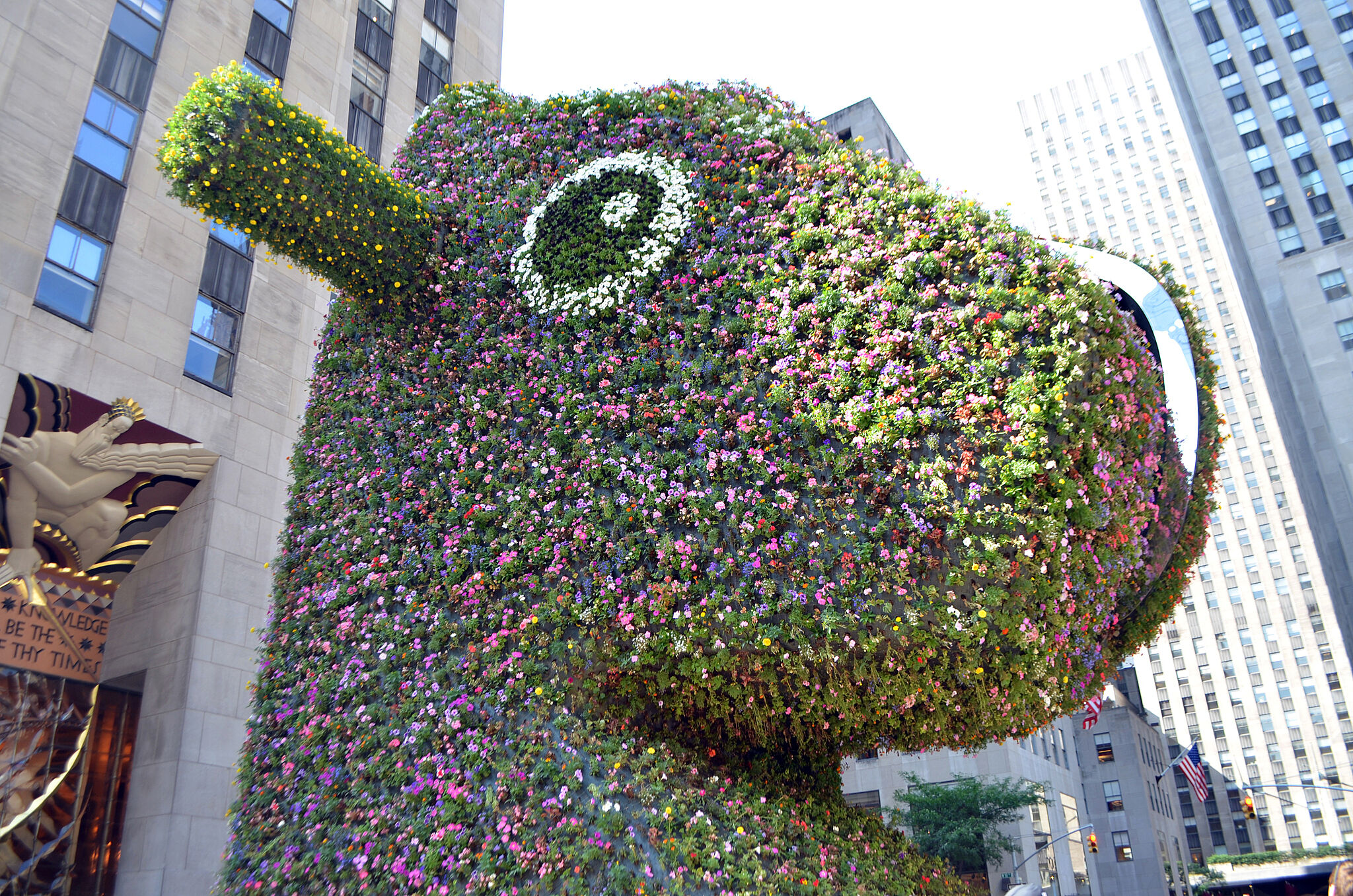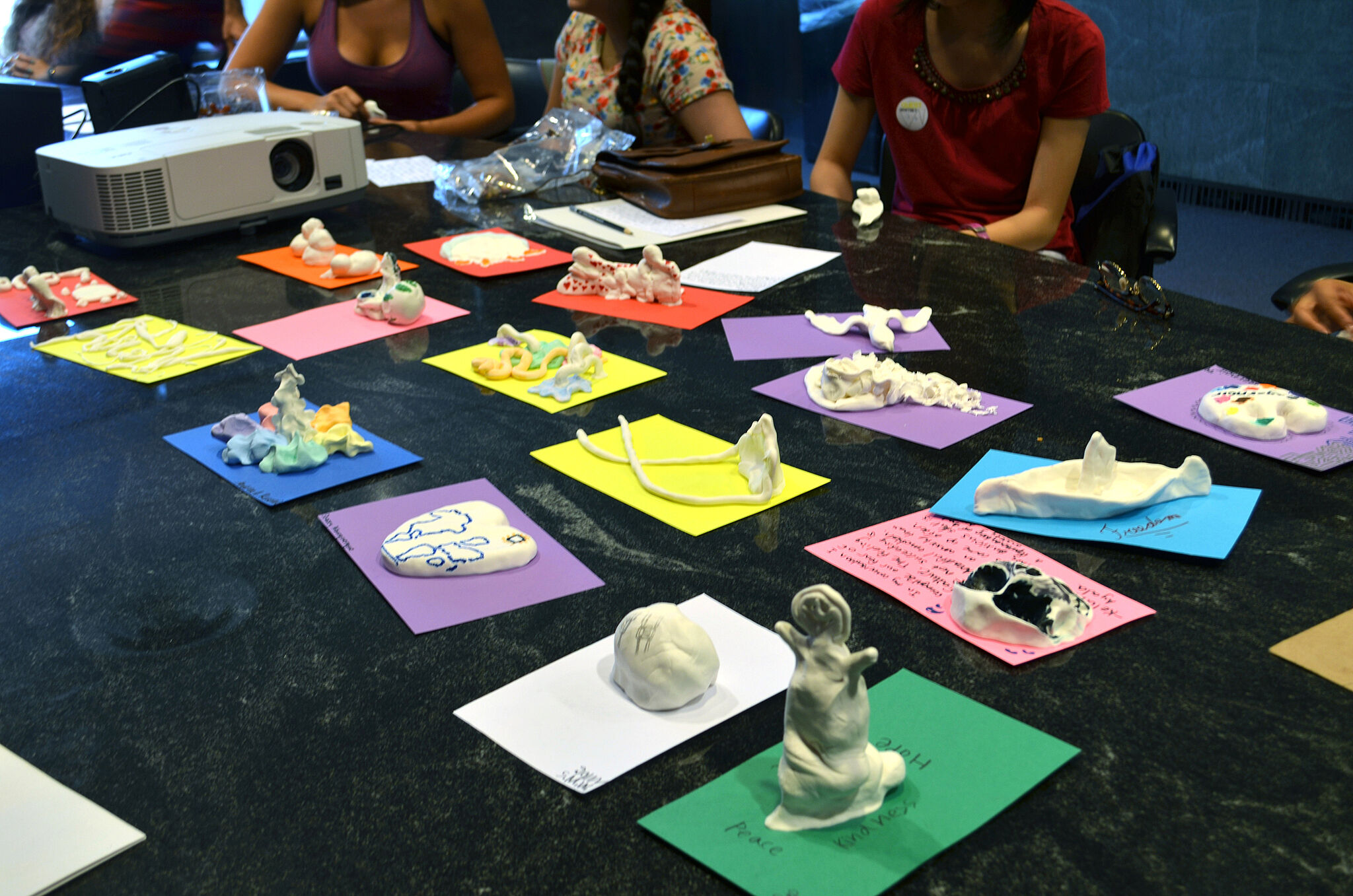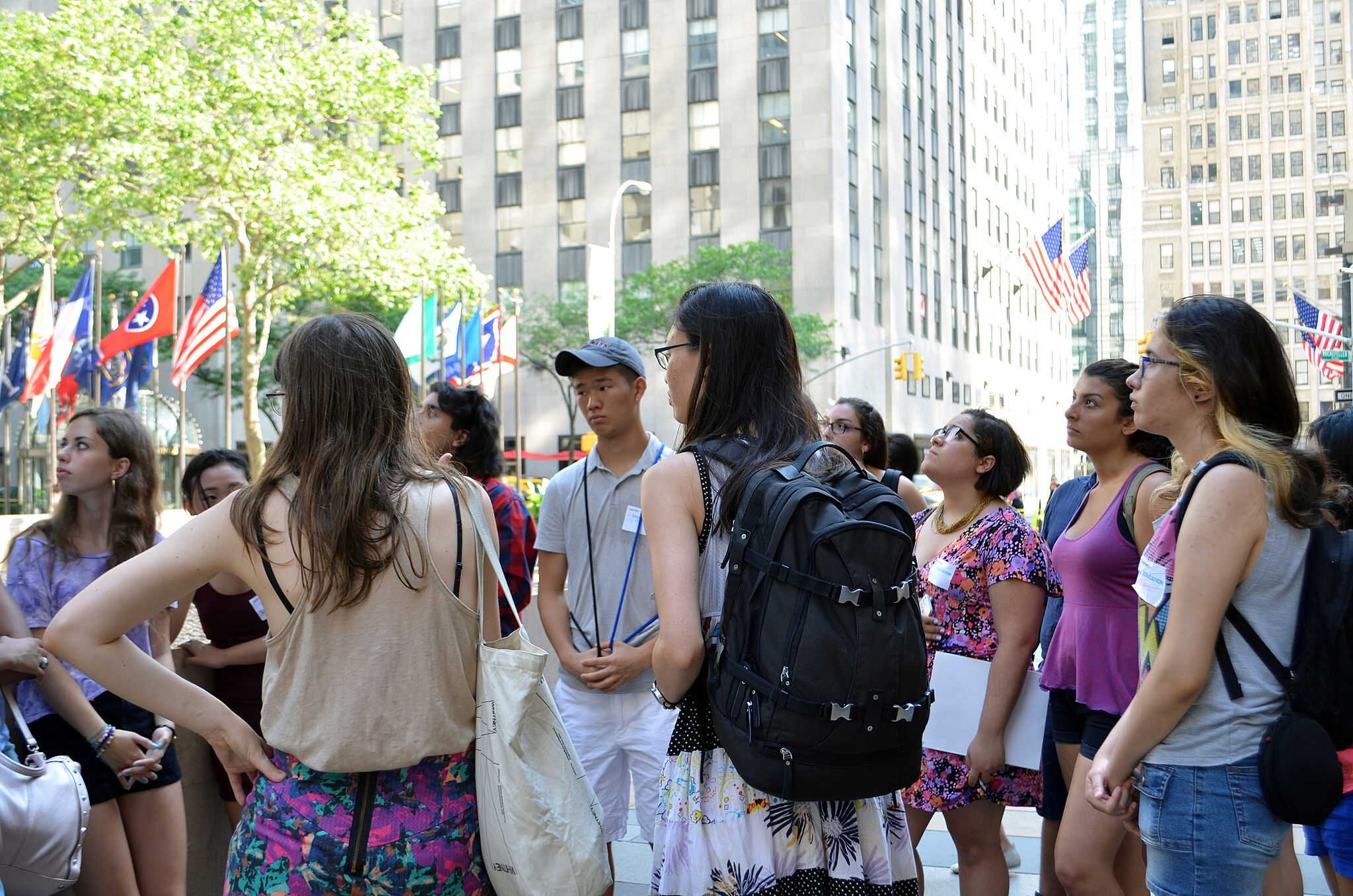YI Summer explores Self and City: Jeff Koons’s Split-Rocker
Jul 2, 2014
On July 2, Youth Insights Summer Intensive Program participants began with a series of group-generated questions to help us explore what we want out of a future career. The questions ranged from very simple: "What are your three best and worst traits?" and "What lifestyle would you like to have in the future?" to more complex: "What would you be willing to sacrifice in order to obtain what you desire?" The questions drew out dreams of particular pursuits, our own requirements for our futures, and acknowledgements of our own best and worst traits, weighing all three against one another in our considerations of what careers might or might not be right for us. The exercise taught us more about ourselves and, later, we sought to portray what we had learned visually, in the form of Model Magic sculptures. The activity brought about an abundance of highly varied creations, including a serious little skull, a swallow bird stretched in flight, and many abstract pieces.
Afterwards, we headed to the galleries for a quick glimpse at Jeff Koons's Split-Rocker (1999), before taking the train to Rockefeller Center to see the much larger public installation of the same sculpture. I was surprised that, while the two were similar in shape, they differed vastly in details and aura. Both works feature a head that is half playroom rocking-horse and half toy dinosaur, both are innocently wide-eyed, with handles protruding from either side of the head, which a child might clasp while playing. However, the sculpture at the Whitney is in bright, playful colors whereas the enormous Split-Rocker at Rockefeller Center is adorned with multicolored native New York flowers and is huge, visible from across across Rockefeller Plaza, where the Whitney’s version is small.
The differences did not end there. To me, the Rockefeller Split-Rocker felt freer: instead of being on view indoors where only Museum visitors can see it, this sculpture was exposed to the elements and the glances of casual passersby who stumbled upon it. Small sparrows were roosting on it. The outdoor sculpture struck me as being fully incorporated into its environment, as if it had practically laid down roots on the spot—it interacted with the things around it, instead of occupying its own private space. So I think I truly understood what Hannie, the YI coordinator, said: that the artist intended the public installation to be his "gift" to the city.
By Ashley, YI Summer Participant



